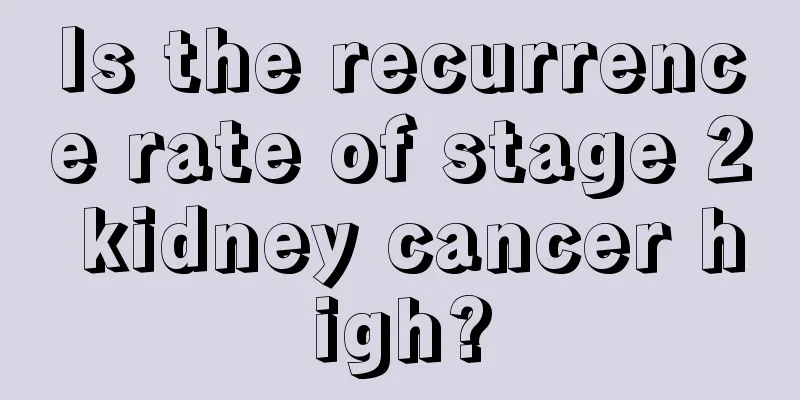What is the disease of feeling panic?

|
The feeling of panic in the heart is medically known as palpitations. Many reasons can lead to symptoms of palpitations, such as increased heart rate, arrhythmia, cardiac neurosis, etc. Palpitations can cause great discomfort to people. If not treated for a long time, it will seriously affect a person's mental state and even affect his or her normal life. Therefore, after the symptoms of palpitations appear, you must first find out the cause and then treat it! 1. Increased heart rate Palpitations caused by increased cardiac contractility can be physiological or pathological. Physiological ones occur in healthy people during strenuous exercise or excessive mental stress; after drinking alcohol, strong tea or coffee; or after taking certain medications, such as adrenaline, ephedrine, caffeine, atropine, thyroid tablets, etc. Pathological cases are seen in the following situations: 1. Ventricular hypertrophy: Left ventricular hypertrophy caused by hypertensive heart disease, aortic valve insufficiency, mitral valve insufficiency, etc., increases the heart's contractility. Patent ductus arteriosus and ventricular septal defect increase the heart's workload, leading to ventricular hypertrophy and may also cause palpitations. In addition, beriberi heart disease can also cause palpitations due to vitamin deficiency, which causes dilation of peripheral arterioles, reduced resistance, increased blood flow returning to the heart, and increased cardiac workload. 2. Other diseases that cause increased heart rate: (1) Hyperthyroidism is caused by increased basal metabolism and sympathetic nerve excitability, which leads to an increased heart rate. (2) Anemia, most notably palpitations during acute blood loss. In anemia, the amount of oxygen carried by the blood is reduced, causing organ and tissue hypoxia. To ensure oxygen supply, the body compensates by increasing heart rate and increasing output. The increased heart rate causes palpitations. (3) Fever. At this time, the basal metabolic rate increases, the heart rate accelerates, and the cardiac output increases, which can also cause palpitations. (4) Hypoglycemia, pheochromocytoma, etc. may increase the release of adrenaline, accelerate the heart rate, and may also cause palpitations. 2. Arrhythmia Palpitations may occur when the heart beats too fast, too slowly, or with other arrhythmias. 1. Tachycardia: Sinus tachycardia, paroxysmal supraventricular or ventricular tachycardia caused by various reasons can all cause palpitations. 2. Bradycardia: Severe atrioventricular block (second or third degree atrioventricular block), sinus bradycardia or sick sinus syndrome causes palpitations due to slow heart rate, prolonged diastole, increased ventricular filling, and strong and powerful heartbeat. 3. Other arrhythmias: premature contractions, atrial flutter or fibrillation, etc. Due to irregular heartbeats or intervals, the patient feels palpitations or even a feeling of cardiac arrest. 3. Cardiac neurosis It is caused by autonomic nervous system dysfunction and there is no organic disease in the heart itself. More common in young women. In addition to palpitations, clinical manifestations often include accelerated heart rate, dull pain in the precordial area or apex, as well as neurasthenia symptoms such as fatigue, insomnia, dizziness, headache, tinnitus, and memory loss, which are more likely to occur in situations of anxiety or emotional excitement. β-Adrenergic receptor hyperresponsiveness syndrome is also related to autonomic dysfunction and is prone to occur when one is nervous. In addition to palpitations, tachycardia, chest tightness, and dizziness, there may also be some changes in the electrocardiogram, including sinus tachycardia, mild ST segment depression, and flat or inverted T waves, which can easily be confused with organic heart diseases. The propranolol test can identify this disease as β-adrenergic receptor hyperresponsiveness syndrome. After the application of propranolol, the electrocardiogram changes can return to normal, indicating that the changes are functional. |
<<: Get rabies vaccine before getting sick
>>: What kind of disease will be caused by long-term use of aluminum products
Recommend
What are the main treatments for lung cancer? Lung cancer patients can try these dietary remedies
Lung cancer is a type of lung disease, and its in...
What should patients with valvular heart disease pay attention to
In addition to following the doctor's treatme...
How to stretch waist muscles?
The waist muscles are very important to the human...
Can patients with gastric cancer exercise in the morning?
Gastric cancer itself is a wasting disease, which...
There are black spots inside the nails when I cut them
Friends who often watch TV will often see some ad...
Cow testicle cleaning steps
Some people like to eat bull testicles. Bull test...
Is the red-headed black-bodied centipede poisonous?
I believe everyone has seen reptiles such as cent...
What are the causes of systemic fat metabolism disorder
When the production, utilization and storage func...
What's wrong with the fleshy pimples on the corners of my mouth?
A fleshy pimple, as the name suggests, is a large...
How sunbathing can prevent skin cancer
How does sunbathing prevent skin cancer? In fact,...
What is the effect of lavender essential oil_What is the effect of lavender essential oil
Many female friends choose to use some essential ...
Exercise can prevent lymphoma patients from getting sick
Lymphocytes are the health guardians of the human...
The cause of the face always getting red and hot
Some people's faces are always red and hot. S...
What are the effects of nasopharyngeal carcinoma treatment?
What is the treatment for nasopharyngeal carcinom...
What are the symptoms of advanced lung cancer? Three common symptoms of advanced lung cancer
Cancer is a disease that people are afraid of. Lu...









